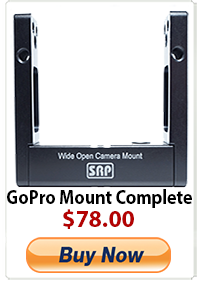THE POWER OF THE CAMERA
UPDATED: There used to be a photograph from Alex MacNaughton here. He’s a photographer I admire enormously and it’s a blinding photo. I’d violated copyright by sticking it on the site and that was dumb, but it’s still a great photo and if you want to see it then please go here.
Alex got in touch to chastise me for self-aggrandisement. Good for him. [24/08/2011]
Think about what we do for a second. We fiddle around with contraptions made of glass and plastic, making decisions based on nothing more than a subjective impression of neurological impulses and we obsess over the results. We’re nosey, we’re noisy, we’re annoying. We’re filmmakers and we think we’re really important. The thing is, we really are. Sort of. We’re much more important than we’ve ever been, but that’s not about the increasing relevance of filmed media and its proliferation in the world. It’s about the simple power of a camera in a person’s hand.
Example.
I spend an inordinate amount of time cycling in London. This is tantamount to barefoot water skiing on razorblades. Sketchy as hell. It is not uncommon for me to be nearly killed at least three times, every time I go anywhere. I counter this by getting incredibly irate with bad drivers, not quite road rage, but there’s definitely a blue hue to the air through which I ride. The ramifications of this are that I’m suddenly aware of how incredibly vulnerable I am. If you saw the images of Johnny Hoogerland being catapulted into a barbed wire fence by a news car a couple of days ago at this year’s Tour De France, you’ll understand completely. Drivers get the hump, they don’t like being mugged off by a cyclist. It can be very dangerous. And that’s when I had a brainwave. When the angry driver pulls up behind me to shout insults I whip out my trusty iPhone and start filming him. I have a license plate, I have a car, I have all the power.
Example.
The building next door is being renovated, huge building works going on all day. The building regulations state that no work must be carried out before 8:30. Every morning they begin thumping and banging at 7am. Yesterday I’d had enough and went down to confront them as they were caving in a shopfront with hammers and saws. Ten builders, Eastern European, burly. I started taking pictures of all of them. The foreman came out in a flash and we got it all sorted out very amicably.
The news channels are constantly awash with mobile phone footage. It’s getting to a point where a crisis doesn’t really merit the title unless a crew of mobile video ops were on the scene. We’re incredibly privileged as filmmakers, given access and permission. In London the rights of street photographers are being seriously debated and the threat of terrorism looms large whenever anyone takes out a camera. And yet, it’s still an incredibly powerful piece of equipment. I can become quite blasé about what I do, but I know how much I squirm when it’s turned on me. I love reportage photography more than any other for this very reason. We should never forget just how powerful our basic tools can be.
-
http://twitter.com/bradbelltv Brad Bell










